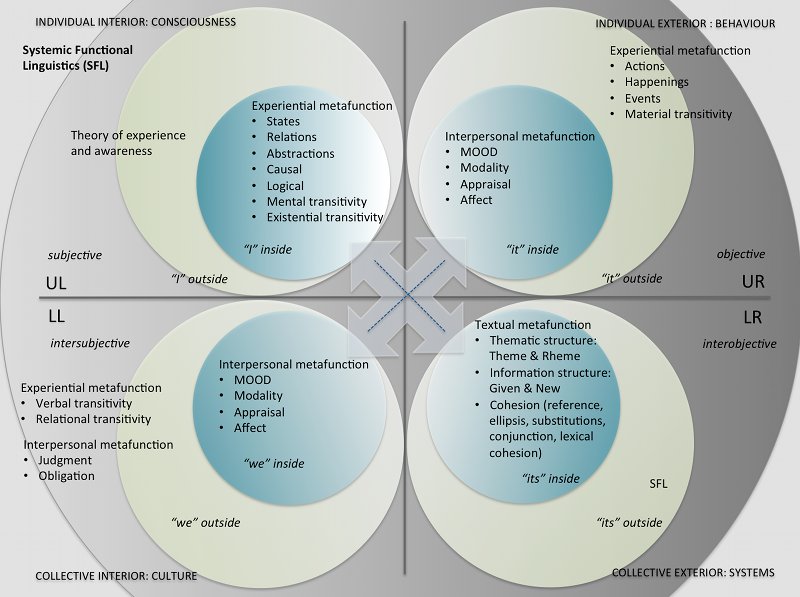Figure 1. A representation of Halliday’s (1994) systemic functional linguistics as a language system in Wilber’s (2006) All Quadrant All Levels (AQAL) model. This SFL AQAL model places the metafunctions of SFL into the eight primordial perspectives of the eight methodologies, rendering a sixteen dialogic perspective of language theory and structure situated in a four-quadrant model.
Text & Photo © JE Nilsson, CM Cordeiro, Sweden 2015
I love modeling. That is, fitting pieces of concepts that build a collage of sorts with neat corners. I have been contemplating if I could fit Halliday’s systemic functional linguistics (SFL) as a language system into Wilber’s All Quadrant All Levels (AQAL) model. Models derived from general theories are not always practical, but as Hjemslev (1970:105) argues of creating a general theory of linguistic structure:
“we must start with some definition of language of the kind we have been considering, because the establishment of such a theory is not simply, or even principally, a matter of experience, but rather of calculation. Experience is no adequate basis for a theory of linguistic structure: it would be impossible to go through all existing linguistic texts, and, moreover, it would be futile, since the theory must be valid not only for the texts that have been written or spoken up to now, but also for those that will be written or spoken in the future.
